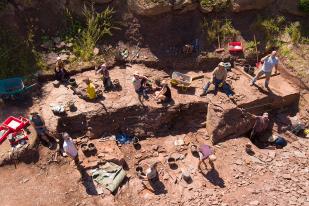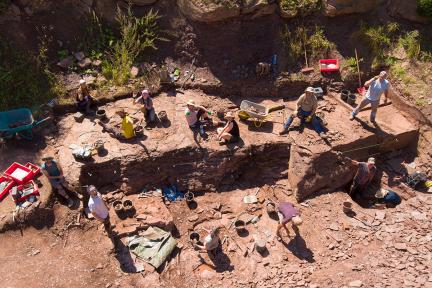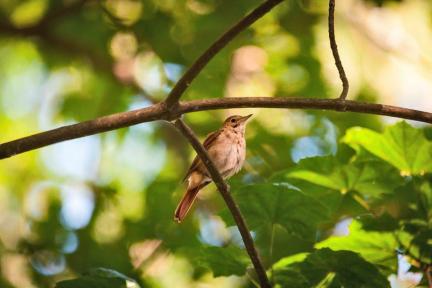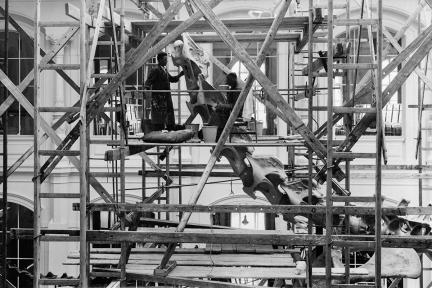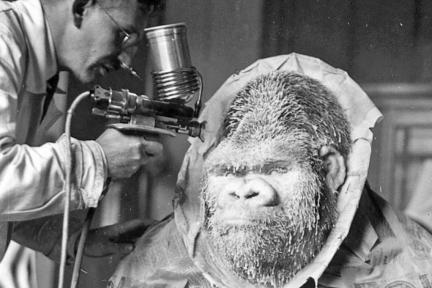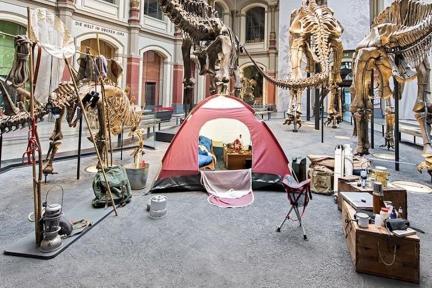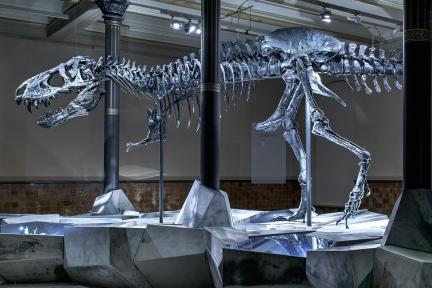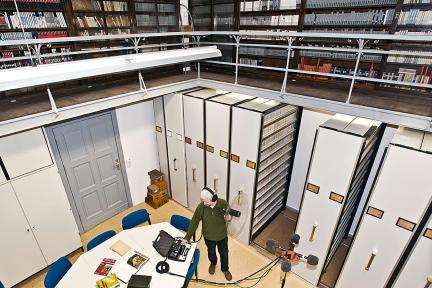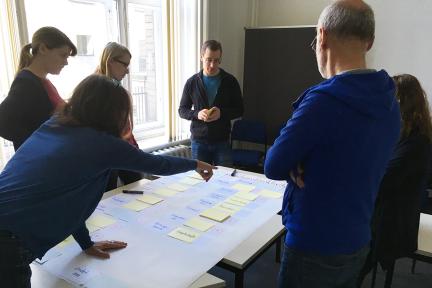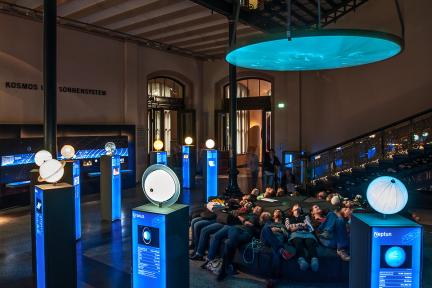Communicating
The Museum’s state of the art exhibits based on authentic specimens and science draw unparalleled numbers of visitors – in Berlin and worldwide. The Museum’s exhibition development follows a seemingly simple premise: to create exhibits in-house that highlight original specimens of the Museum’s own collection, that put its scientific expertise and its researchers at the centre and that experiment with novel approaches to science communication. Its success has proven the concept correct: in 2016, the Museum drew a record 821.489 visitors and became the most visited of Berlin’s 170 museums, as well as the most visited natural history museum in Germany. With its temporary exhibitions, the Museum has contributed to ongoing public and political discourse to biodiversity and human impact on the natural environment. With the special exhibitions ARA and ARTEFACTS, the Museum took a further step to embed its collection and knowledge in public discourse. Accompanying the exhibit development, educational programmes have been significantly expanded to attract more participants and a strategic approach is drawing in underrepresented groups. The Museum has been offering a great variety of programmes to bring the house and external scientific expertise into dialogue with society. The strategic decision to focus especially on young adult audiences has paid off and they are now over 30% of our visitors. Yet, at the same time, the Museum remains popular with traditional core family audiences.
The opportunity to display the first (top quality) skeleton of a T. rex (Tristan Otto) in Europe provided an excellent opportunity to attract attention and to change perception of the role of the Museum. The campaign was structured around ‘Asking research questions’ and was used as a platform to highlight the Museum’s wide range of research, especially on dinosaurs, from palaeontology to cultural history and imaging technology. It was a unique vehicle to showcase the Museum as an integrated research museum. Aside from Tristan Otto, the Museum received significant press coverage domestically and internationally. From an hour-long special on Chinese TV, to a front page on its building sites in the local Berliner Zeitung and numerous radio interviews on the biodiversity crisis and citizen science projects – the Museum’s experts are much requested partners of the media. In addition social media activities have been strengthened, opening more channels of communication to non-scientific target groups.
With a steady and strong representation in the media, the Museum has specific outreach to policymakers to achieve the strategic goal of engaging more intensively in social debates and to encourage action. Anchoring the Museum in Berlin, a partnership with Der Tagesspiegel, the local daily newspaper, has opened the collection to Berliners. The series is curated in-house with the input of collection staff and has used collection objects to communicate research by Museum scientists, to introduce local nature and seasonal migration, to highlight newly described species and it gave insects a lot of room, especially during the summer of 2018, when the public debate on biodiversity loss started.
The Museum has developed communication formats that seek to cross the disciplinary divide and draw large audiences as well as engage policymakers. The Museum, in collaboration with the Humboldt-Universität zu Berlin, established the popular “Wissenschaft im Sauriersaal” lecture series, attracting renowned experts and a full Dinosaur Hall with more than 200 attendees at every event. Collaborating with Leibniz-partner Berlin Social Science Center (WZB) for the event series “Wissenschaft, natürlich!” (“Science, naturally!”), the Museum specifically addresses current topics from a natural sciences and a social sciences angle.These events take place four times a year. Both event series are financed by the action plan of the eight research museums of the Leibniz Association, strengthening their role as mediators and activators between science and society.
